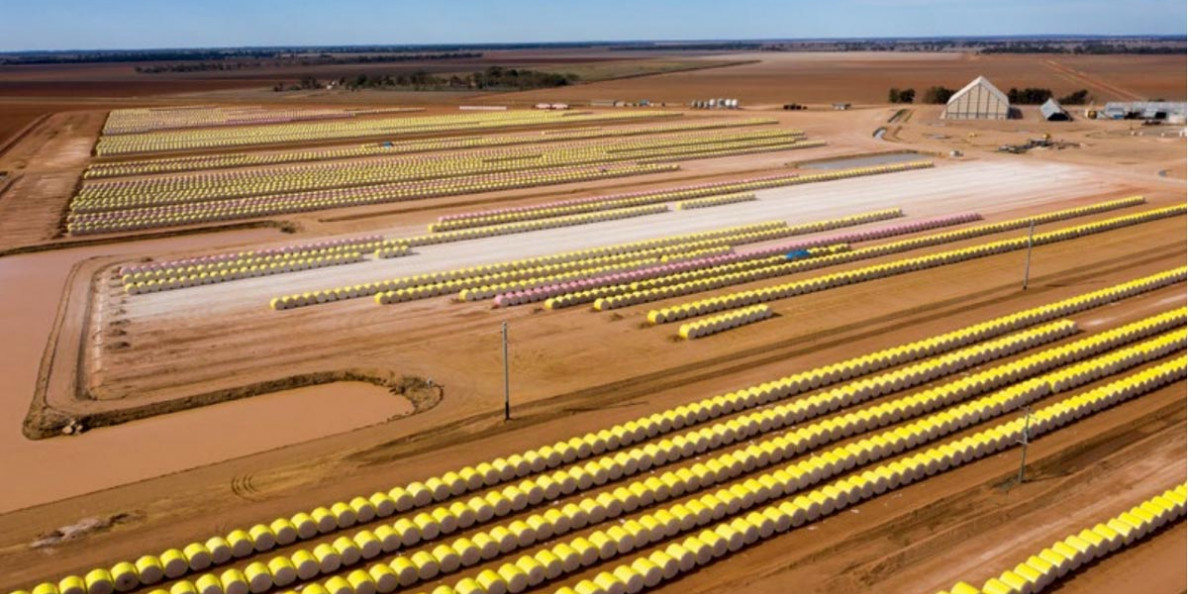Michael ORielley, Chairman, Australian Cotton Shippers Association
Australia's cotton industry is totally reliant on exports, with China being one of the major markets.
Australia has found itself very quickly divorced from its major trading partner China and Australian cotton is certainly part of the fallout, but how do we move on?
Moving on means reinvigorating established markets and growing markets where consumption of Australian cotton is smaller.
Australian cotton has been sold into most Asian and sub-continent markets for a long time and it is these traditional Asian markets where Australian cotton earned its reputation as a reliable supplier of high quality fibre - and it's a reputation that still holds firm today.
Australian cotton is highly regarded in the traditional markets of South Korea, Japan, Indonesia and Thailand.
Unlike China, India or Pakistan, these traditional markets for Australian cotton do not have their own source of supply of local production.
These countries are totally reliant on imported cotton and this makes them more reliable buyers.
They have some inherent disadvantages by comparison to those integrated "commodity cotton" countries and are more discerning buyers who demand reliable high quality supplies in order to produce higher quality yarns and fabrics.
Looking more closely at Japan and South Korea, while the volumes of cotton spun in these markets are in decline on account of their relatively higher labour and transport costs, they remain very influential buyers of Australian cotton.
Japanese and South Korean spinning companies have generally relocated their spinning capacity to other more competitive markets including Indonesia, China and Vietnam, but are still sourcing Australian cotton for their offshore operations.
Then there are two former powerhouse consumers of Australian cotton - Indonesia and Thailand.
The number of spinning companies in Indonesia and Thailand demanding Australian cotton has declined since the late 1990s, however those remaining in Indonesia and Thailand still recognise Australian cotton's inherent fibre characteristics.
Indonesia was our largest market before it was overtaken by China and may be on the rise again.
As a net cotton importer, the Indonesian market continues to be primarily a yarn producer and exporter as opposed to a fully integrated garment producer.
Australian cotton must compete with Brazil and US cotton but because of our peak export period of April through to October, it still allows us a somewhat countercyclical preference for high grade demand.
Indonesia as a potential growth market will certainly be on our radar for more bales to flow into.
Thailand too may look for additional volume compared to what they have been buying over recent years.
Moving on to Vietnam, there is a lot of upside potential.
Vietnamese cotton consumption has now stabilised around 7 million bales after some rapid expansion that was led by foreign direct investment.
Vietnam has 98 spinning mills with 9 million spindles (equivalent).
Of this, 70 mills are locally owned but account for only 45 per cent of the spinning capacity.
The remaining 28 mills (30pc of capacity) are owned mostly by Chinese and Taiwanese concerns plus some Korean representation.
Vietnam's cotton consumption heavily depends on China's demand for cotton yarn with domestic consumption of cotton yarn being less robust.
South Korea and Turkey are other markets for the country's yarn exports.
The United States remains the dominant cotton supplier to Vietnam, with more than a 48pc share of Vietnam's total cotton imports.
Brazil, India and Australia, in that order make up another 40pc of the cotton imports.
This is a market that Australia will hear more about in terms of Australian cotton consumption.
Another market that highly regards Australian cotton is Bangladesh. A net importer of raw cotton, Bangladesh depends on the Ready Made Garment sector for over 80pc of their GDP.
We have in the past seen a lot of Australian volume find its way into the Bangladesh market and Bangladesh can rival China for its ability to import Australian cotton in terms of the size of the individual shipments over a short time span.
While on the topic of the ability to import large volumes of cotton, we cannot go past India.
India is always in the mix for our cotton and this will continue to be the case.
Other markets that have been around for a long time (and will likely see some of our volume making its way there) are Pakistan and Turkey.
History shows that the textile industry moves around the globe as countries develop and labour demands shift.
It is evident that countries like India, Pakistan, Vietnam and Bangladesh can and will possibly be textile power houses into the future and there is no doubt that other countries like Myanmar, Cambodia and some African nations might also become relevant.
It is imperative that the Australian cotton industry, being totally reliant on exports, positions and promotes itself in a way that enables it to survive in the ever-changing global marketplace.


